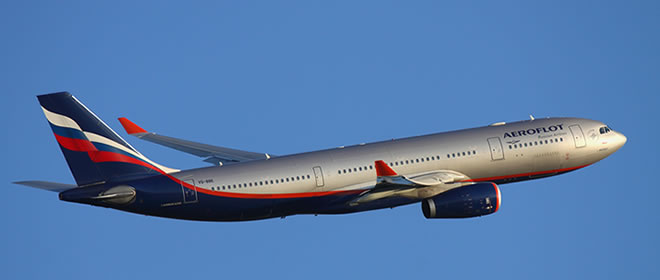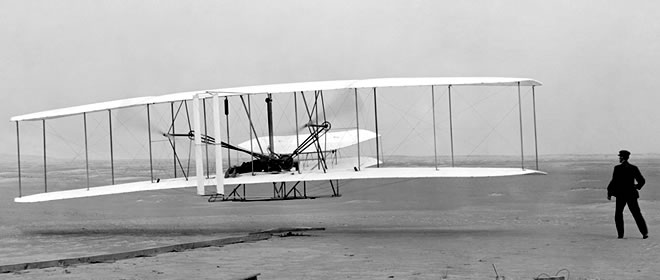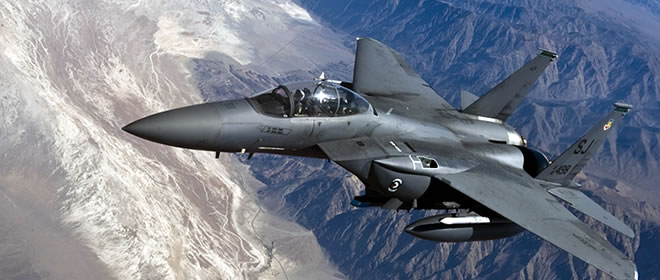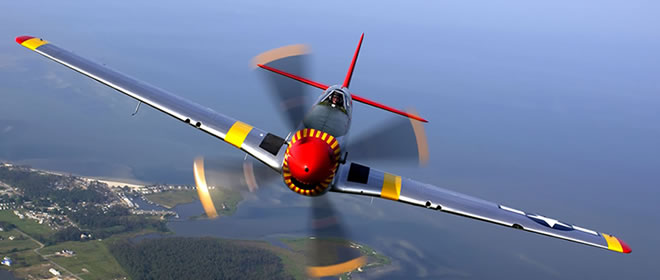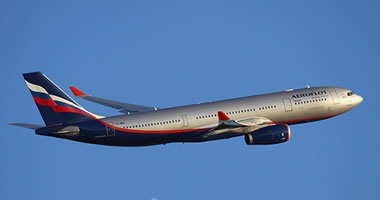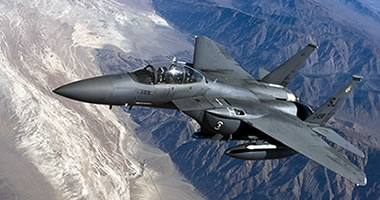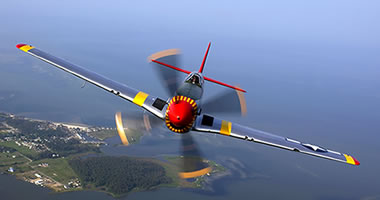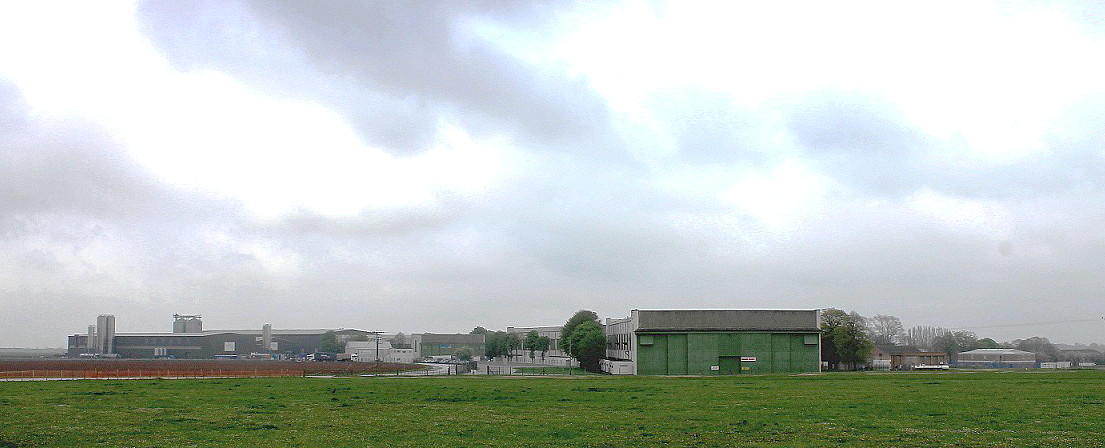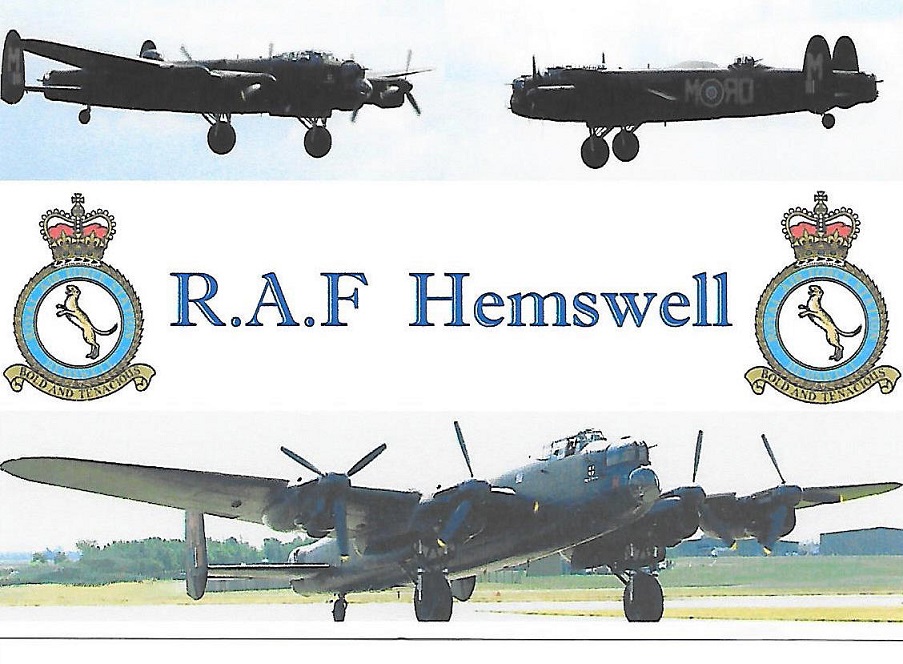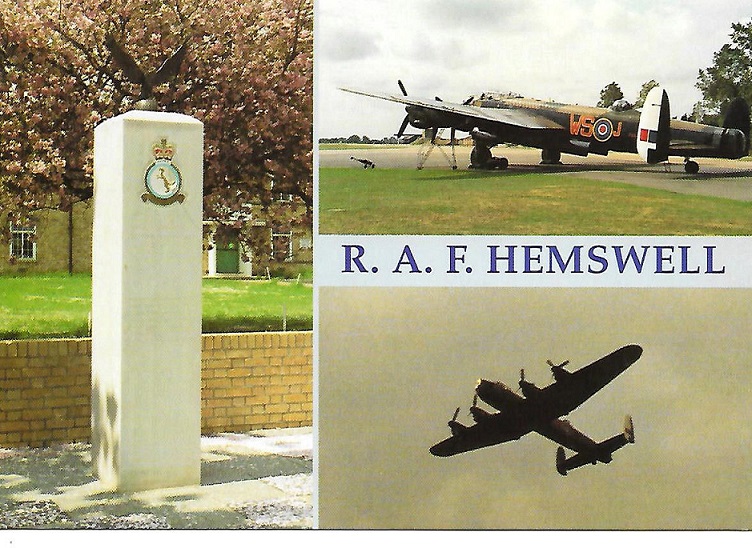Hemswell
HEMSWELL: Military aerodrome later civil airfield (Previously in WW1 RFC later RAF HARPSWELL - see seperate entry)
Note: First three pictures by the author, the second being taken through perspex. Fourth picture obtained from Google Earth ©
Military users: RAF Bomber Command?
Interwar years: 61 Sqdn (Hawker Audaxs’, Avro Ansons then Bristol Blenheims)
WW2: RAF Bomber Command 1 & 5 Group
21 Sqdn (DH Mosquitos)
61 & 144 Squadrons (Handley Page Hampdens)
300, 301 & 305 (Polish) Sqdns (Vickers Wellingtons)
429 Sqdn (Handley Page Halifaxs)
Night Bomber Tactical School OCU (Avro Lancasters)
Note: These pictures from postcards were kindly sent by Mike Charlton who has an amazing collection. See, www.aviationpostcard.co.uk
If anybody can kindly provide more information about the Lancaster, or Lancasters (?) seen on these postcards, this advice will be very welcome.
Post 1945: RAF Bomber Command
97 Sqdn (Avro Lincolns)
109 Sqdn (DH Mosquitos)
100 Sqdn (Avro Lancasters later Lincolns)
Later USAF (More details needed?)
Flying club: Lincoln Aero Club (1968 to 1975)
Gliding: 1970s only?
Location: E of B1398, E of Hemswell village, 7nm E of Gainsborough
Period of operation: Military: 1937 to 1967 Civil: 1968 to 1975 only?
Runways: WW2: 15/35 1829x46 hard 05/23 1554x46 hard
10/28 1554x46 hard
NOTES: Today there is so much myth and legend regarding Bomber Command in WW2. In some small part in this Guide I have tried to present, bit by bit and with much help from various highly capable authors, parts of the picture that are not generally appreciated today. Bombing in WW2 was a very brutal business, both for the bombers and those being bombed.
In January 1943 the RAF dropped 103,119 tons of bombs on enemy targets. By December that year this had risen to 264, 506 tons. As HEMSWELL later became a major USAF base it seems apposite to record that the RAF in 1943 dropped four times the tonnage compared to USAAF aircrews. Today the sight of a B-17 Fortress at an air show thrills, but few mention that it was, compared to a Lancaster, only capable of carrying half the bomb load with a crew of nine compared to seven for a Lancaster.
So sad to think of all those mostly doomed aircrew when a B-17 was shot down, when a British Mosquito carried the same bomb load with two crew, (and it could carry a heavier load for some missions), was much faster and had a great deal more chance of surviving. Aspects of the conflict not much appreciated by people today, when the nostagia machine kicks in..
SOMETHING TO CONSIDER
I think it is at least worthwhile to examine a few statistics. For example ‘Butcher’ Harris had predicted to Churchill that 500 bombers would be lost attacking Berlin, but the price of surrender was worth the sacrifice. His prediction of losses is pretty much correct, but, Germany did not surrender. We will of course never know the outcome if the 4000 bombers Harris had requested had been provided?
For those who now believe area bombing by the RAF was unwarranted and non-productive against the war effort - they need to both read the history and visit local town and city museums in Germany. Many have models showing the state of the town or city towards the end of the Allied bombing campaign. Even when only partly successful in terms of hitting the target the devastastion wreaked was invariably immense.
And of course there is the question of retribution, which is a fundamental aspect of war of course. The Nazi regime started the whole idea of indiscriminate area bombing of civilian centres. Witness the attack on Guernica in the Spanish Civil War when the Nazi regime backed the facist leader Franco.
On this premise alone it follows that every bomb dropped on a German town or city was totally justified. Indeed, if it wasn’t for the general incompetence from the RAF High Command a great deal more damage shoud have been done, which might well have shortened the war? Which ‘Butcher’ Harris himself believed would be the case thinking about the bigger picture. Except that the Americans had an even bigger picture when they got involved and took over command of the war in Europe - to resist the Soviet forces invading western Europe. In which we now know, was entirely the correct course.
However, we really must remember that in the last stages of the bombing campaign of Germany, with horrific results, the Nazi regime had unleasthed the V.1 and V.2 on England, and London especially. Therefore every bomb dropped on Germany was more than justified and it was probably a damned shame we couldn't have employed an atomic bomb.
ANOTHER ASPECT
It would now seem the Americans were correct, in identifying the main threat in 1943/1944 as being the invasion of western Europe by Soviet forces as being the main issue. Getting rid of German forces being a very big problem obviously, but secondary. The resulting ‘Cold War’ being a hugely costly fiasco. Albiet having many technological benefits which most of humanity have greeted with much enthusiasm. I’ll bet even our kitchen equipment is a major beneficiary?
GETTING BACK TO MUCH KINDER ISSUES
In the May 2006 issue of Popular Flying magazine, Glennis and Steve Elders provided a fabulous article about the history of the Lincoln Aero Club. After being initially based at a farm strip near Lincoln, then BARDNEY and KIRTON-in-LINDSEY, and a short stay at BLYBOROUGH HALL, the Club was allowed to use HEMSWELL, where they arrived in 1968. To quote:
".....the M.O.D. allowed the Club to move to Hemswell in 1968, where it remained until 1975. It proved to be an excellent choice. There was the use of the control tower, a concrete runway which was in good condition, and one of the wartime hangars, which all added up to produce a strong prosperous club and some excellent fly-ins, which are fondly remembered by older members."
"It was a sad day when Hemswell was sold and the Club had to move once more, but it found an airfield with some promise at Sturgate."
THE LINCOLN AERO CLUB FLY-IN, MAY 1969
We have Mr Graham Frost, a great friend of this 'Guide, to thank for the following information. It was a very interesting period, as by then imported aircraft were really making their presence felt on the British GA scene. Also, following the collapse of Beagle, hangarage for some Beagle aircraft was obtained here. Notably for three Beagle 206s, LV-PLG, G-35-18 which became N552MA, and G-35-25.
Worth noting perhaps? The Taylorcraft Plus D G-AIRE and Auster J/1 Aurocrat were both then registered to the Lincoln Aero Club.
SOME OF THE AIRCRAFT SEEN AT THE FLY-IN (Note: Some in the hangar)
Auster: J/1 Autocrat G-AJRE, J/1N Alpha G-APCY, J/1N Alpha G-ARGT (ex VP-YLT),
J/1 Autocrat G-AIJI, J/1 Autocrat G-AJAB
J/2 Arrow G-AJAM (the only example on the UK register)
6A Tugmaster G-ARHM (ex VF557)
Beagle: A61 Terrier 2 G-ASOM (ex G-35-11)
A109 Airedale G-ATAW
B.121 Pup 150 G-AWRX
B.206C Srs.1 G-ATKO, B.206C Srs.1 G-ATYW
Cobelavia, (a Tipsy design): T.66 Tipsy Nipper Srs.3 G-AVKT (ex OO-HEL)
de Havilland: DH82A Tiger Moth G-AHRC (ex T6064)
de Havilland Canada: DHC.1 Chipmunk WK501, Chipmunk WG301, Chipmunk WG310,
Chipmunk WK573, Chipmunk WK576
Laverda-Aeromere: F.8L Super Falco IV G-AVUJ
Morane-Saulnier: MS.892A Rally Commodore 150 G-ATWE
Orlican: L.40 Meta Sokol G-ARSP
Phoenix: Luton LA-4A Minor G-ASCY
Piper: PA-30 Twin Comanche 160B (ex N8395Y)
Reims Cessna: F150H G-AVVX
F172H Skyhawk G-AWLD, F172H Skyhawk G-AVEC
Taylorcraft Auster: Plus D G-AIRE (ex LB376)
Tipsy: Trainer 1 G-AFVN
Wassmer/Jodel: D.112 Club G-AWIG (ex F-BKAA)
A most notable visitor was the Fornier RF-4D registered in the USA as N1700, which had been flown across the Atlantic in the Air Race to celebrate the fiftieth anniversary of the first west-east crossing by Alcock and Brown, by Mira Slovak. This said, it is reported that he flew this aircraft from Germany to Santa Paula in California in 1968.
Les Wood
This comment was written on: 2021-04-02 21:37:36I served at Hemswell as an Air Signaller from 1956/58 in Lincoln’s of 199 Squadron after a period with “Arrow Squadron”. One thing sticks in my memory was snow clearing in 1956 which was a cold winter!
We'd love to hear from you, so please scroll down to leave a comment!
Leave a comment ...
Copyright (c) UK Airfield Guide

